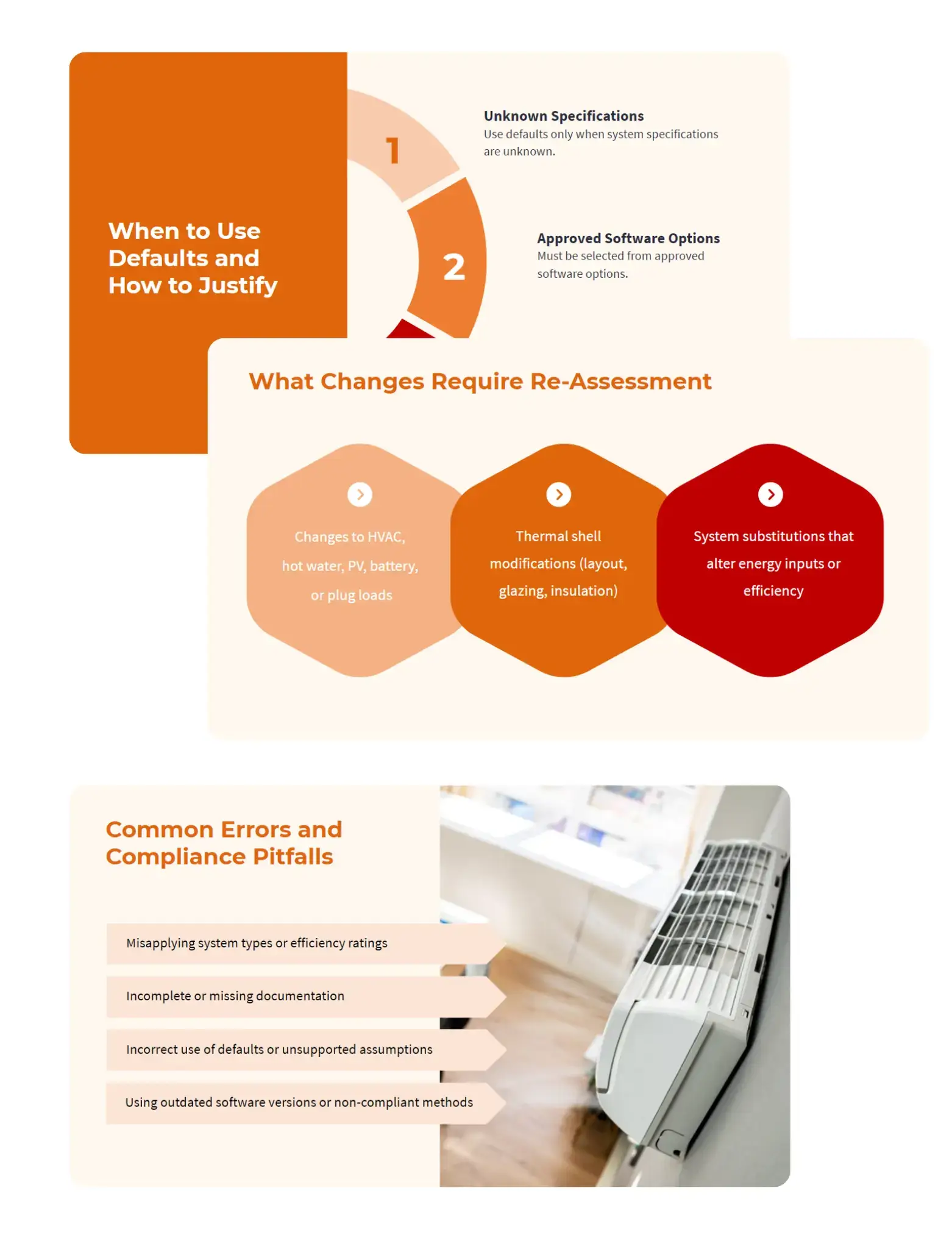Course Content
★★★★★
This course is designed to equip energy assessors, building designers, and compliance professionals with the knowledge and practical skills needed to conduct accurate and audit-ready Whole-of-Home (WoH) assessments under the NCC 2022 and NatHERS frameworks. It covers how to model fixed appliances, PV and battery systems, plug loads, and how to apply defaults and manage design changes in a compliant way. Participants learn how to use NatHERS-accredited software tools, apply ABCB efficiency factors, and generate documentation aligned with NCC Part A5 requirements. By completing this course and passing the final quiz, professionals gain CPD credits and the capability to deliver compliant, transparent, and high-performing energy assessments for Class 1 buildings.

This session is designed for

Energy Assessors

Engineers

Building Designers

Builders

Architects
By the end of this session, you will understand the full scope of Whole-of-Home (WoH) compliance, including how thermal performance, fixed appliances, and renewable systems contribute to a building’s energy profile under NCC 2022. You’ll learn how to model each component accurately using NatHERS-accredited software, apply defaults appropriately, and document all assumptions to meet audit and certification requirements. You will also be able to identify when re-rating is necessary due to design changes and how to manage compliance documentation with transparency and consistency.
This ensures that CPD efforts align with professional regulatory requirements.
What’s Included
This course covers the full process of conducting Whole-of-Home (WoH) energy assessments in line with NCC 2022 and NatHERS requirements. It teaches how to model thermal performance, fixed appliances, PV systems, batteries, and plug loads using accredited software and standard efficiency factors. Participants learn when to apply defaults, how to justify assumptions, and how to manage re-ratings due to design changes. The course also explains how to produce audit-ready compliance documentation aligned with NCC Part A5.

Why Take This CPD Session?

Stay up to date with the latest NCC 2022 Whole-of-Home compliance requirements and their practical application.

Gain confidence in using NatHERS-accredited software to accurately model fixed appliances, renewables, and plug loads.

Learn how to avoid compliance risks and produce transparent, audit-ready reports for certification.
Professional development is an investment in career growth and regulatory compliance. Take the next step today.